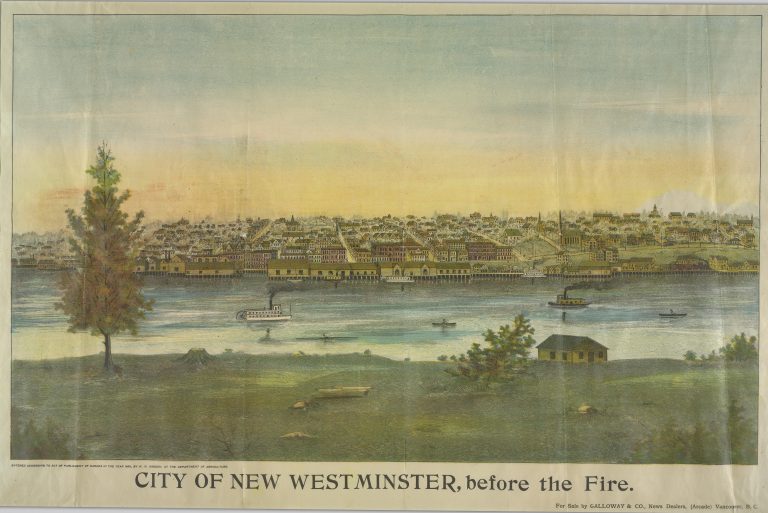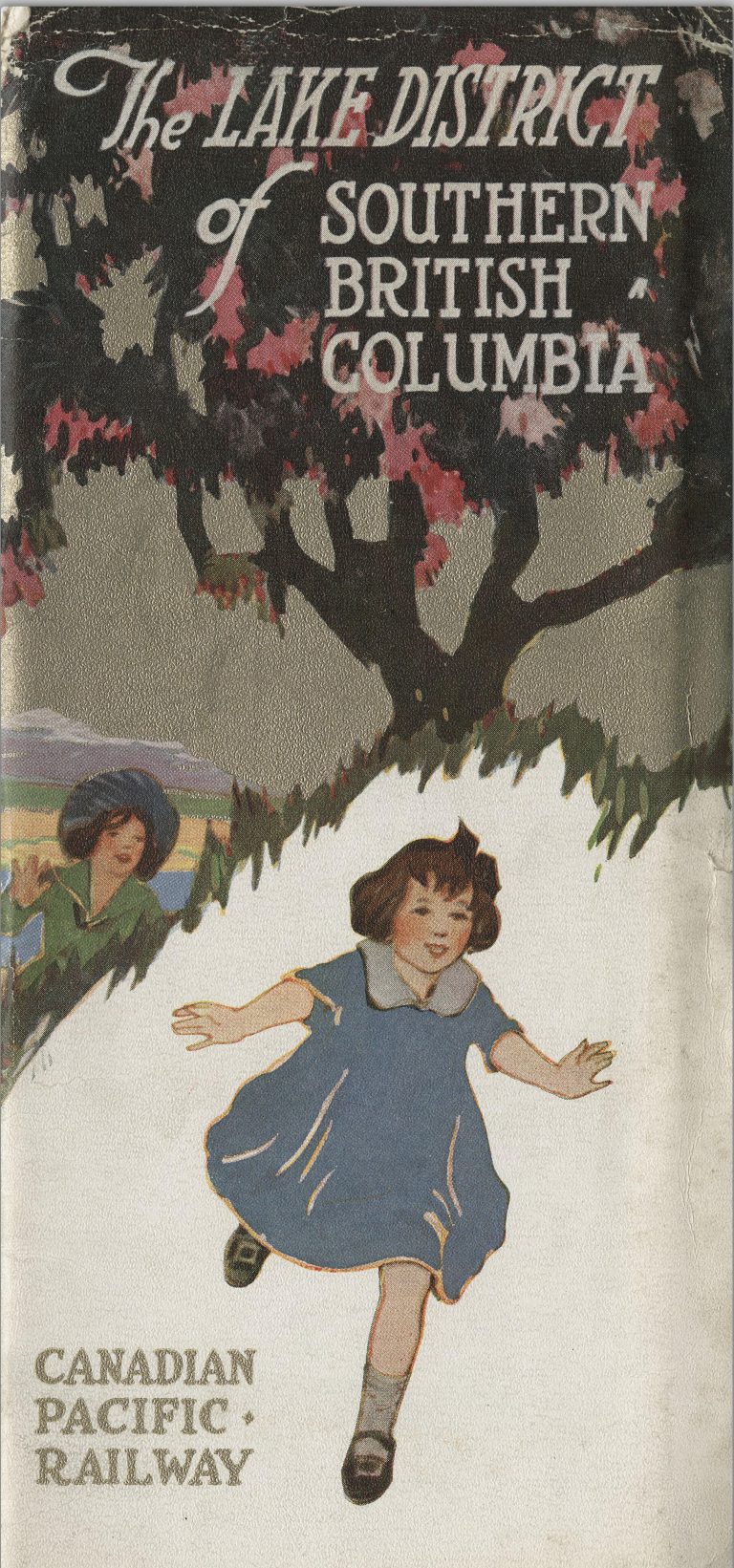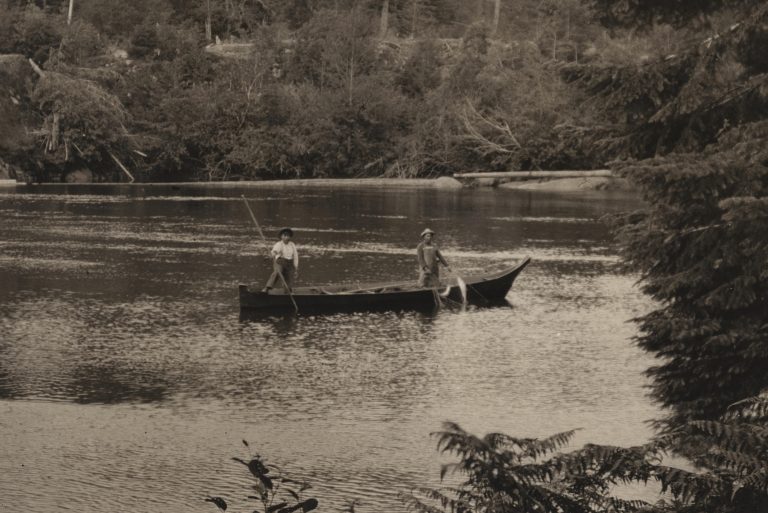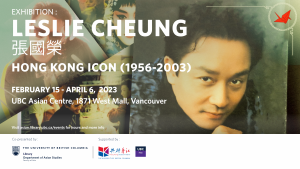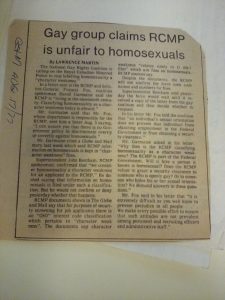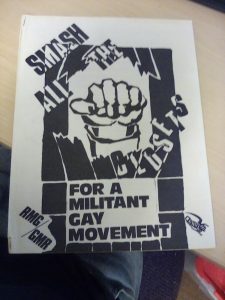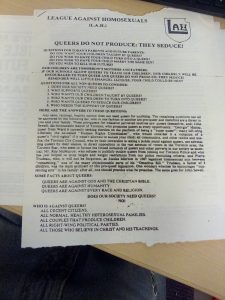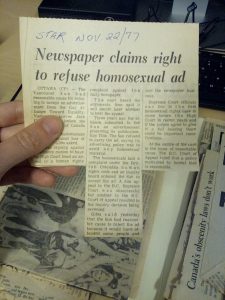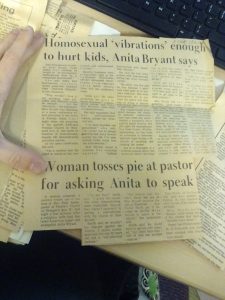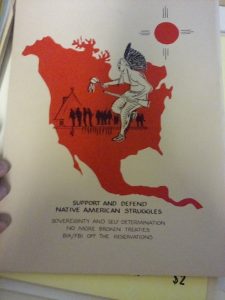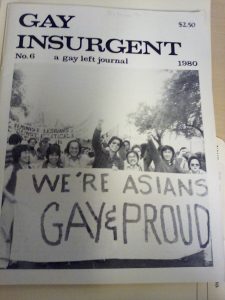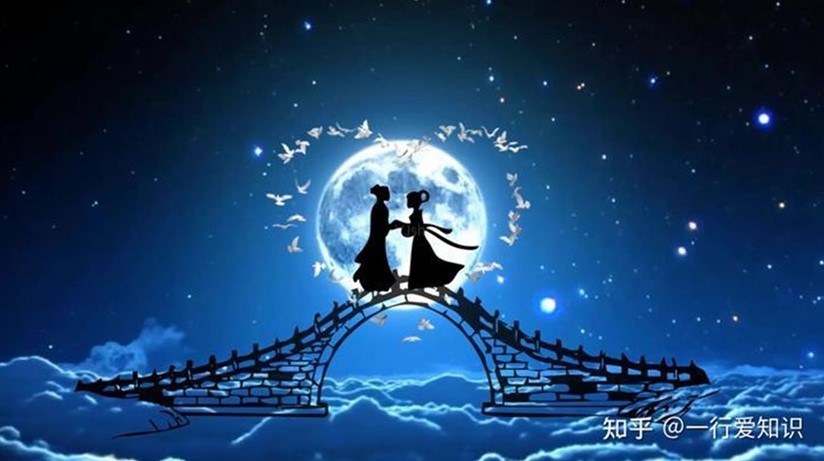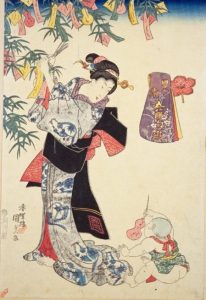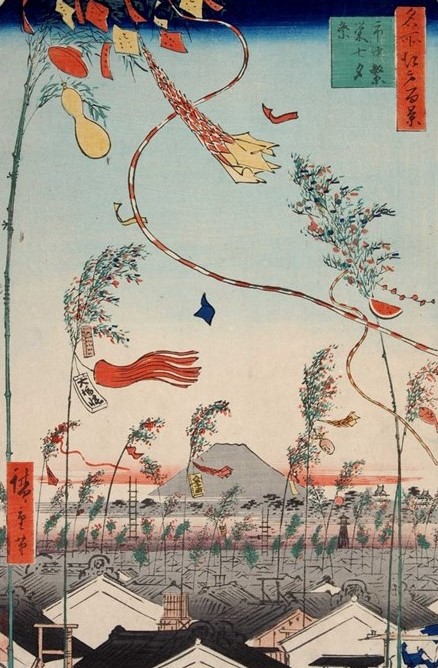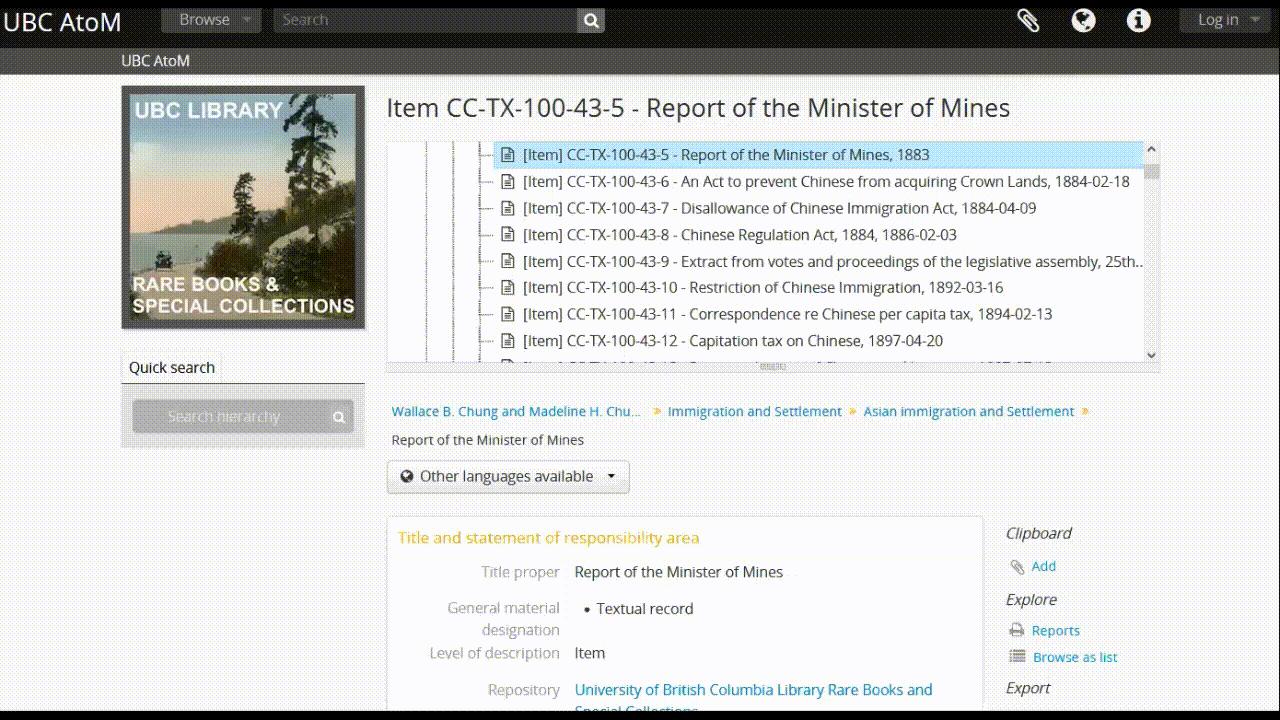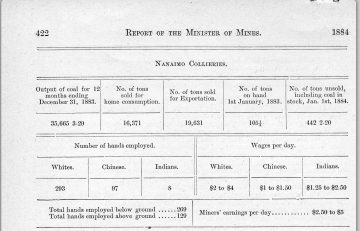Between February and April of this year, UBC Asian Studies and the Asian Library collaborated to host an exhibition in memory of Leslie Cheung Kwok-Wing, the revered Hong Kong singer, actor, performer, and queer icon. This captivating showcase featured an array of publications, recordings, film posters, and other memorabilia from Leslie’s multi-faceted and transpacific life and career. The exhibition attracted hundreds of visitors from both the UBC community and the public, including devoted fans from Toronto and the United States. There was also media coverage from CBC Radio, Fairchild TV, and Sing Tao newspaper.
As we approach Leslie’s birthday anniversary on September 12th, we have compiled a list of resources about Leslie Cheung that you can find within the UBC Library collections. Many of these items were on display during the exhibition earlier this year. Our hope is that this list will serve as a research guide for all those who seek to delve deeper into the enduring legacy of Leslie Cheung.
Chen, Yidong 陈怡东.Dang shi shi zai mei wan mei: Xianggang liu xing yue tan 40 nian当世事再没完美 : 香港流行乐坛40年. Beijing Shi: Fa lü chu ban she, 2016. Print. (ML336.8 H66 C43 2016)
Chu, Yiu-Wai. Hong Kong Cantopop: A Concise History. Hong Kong: HKU Press, 2017. Print. (ML3502 C58 H669 2017)
Collett, Nigel. Firelight of a Different Colour: the Life and Times of Leslie Cheung Kwok-wing. Hong Kong: Signal 8 Press, 2014. Print. (PN2878 C546 C65 2014)
Dehui 的灰. Xianggang dian ying jin xiang jiang di hou lie zhuan 香港电影金像奖帝后列传. Shanghai: Shanghai shu dian, 2007. Print. (PN2877 D44 2007)
Dehui 的灰. Yu ta gong du 61 shi: Zhang Guorong de dian ying sheng ming (Leslie Cheung’s Movie Life) 与他共度61世: 张国荣的电影生命. Shanghai: Shanghai shu dian chu ban she, 2006. Print. (PN1998.3 C6453 D448 2003)
Farquhar, Mary and Zhang, Yingjin. Chinese Film Stars. London; New York: Routledge, 2010. Print. (PN1993.5 C4 C4425 2010)
Guan, Xichao 關熙潮. Zhang Guorong: bu ru wo men cong tou lai guo 張國榮: 不如我們從頭來過. Xianggang: Xianggang zhong he chu ban you xian gong si, 2015. Print. (PN1998.3 C6453 G85 2015)
Leung, Helen Hok-Sze. Farewell My Concubine. Vancouver: Arsenal Pulp Press, 2010. Print. (PN1997.2 F364 L48 2010)
Leung, Helen Hok-Sze. Undercurrents: Queer Culture and Postcolonial Hong Kong. Vancouver: UBC Press, 2008. Print. (NX180 H6 L48 2008)
Li, Zhuotao 李焯桃. Chen Kexin: zi ji de lu (Peter Ho-Sun Chan: My Way) 陳可辛: 自己的路. Xianggang: San lian shu dian (Xianggang) you xian gong si, 2012. (PN1998.3 C4664 C44 2012)
Lingnan da xue ren wen xue ke yan jiu zhong xin, Xianggang wen xue yan jiu xiao zu嶺南大學人文學科研究中心 香港文學研究小組. Dian ying zhong de Xianggang gu shi電影中的香港故事. Xianggang: Xianggang jiao yu tu shu gong si, 2010. Print. (PN1993.5 C4 D564 2010)
Liu, Jingzhi 劉靖之. Xianggang yin yue shi lun: Yue yu liu xing qu, yan su yin yue, Yue ju 香港音樂史論: 粤語流行曲, 嚴肅音樂, 粤劇. Xianggang: Shang wu yin shu guan (Xianggang) you xian gong si, 2013. Print. (ML336.8 H66 L58 2013)
Lu, Weiluan and Xiong, Zhiqin 盧瑋鑾 熊志琴. Wen xue yu ying xiang bi du 文學與影像比讀. Xianggang: San lian shu dian (Xianggang) you xian gong si, 2007. Print. (PL3031 H65 W464 2007)
Luo, Feng 洛楓. Jin se de hu die: Zhang Guorong de yi shu xing xiang (Butterfly of Forbidden Colors: the Artistic Image of Leslie Cheung) 禁色的蝴蝶: 張國榮的藝術形象. Xianggang: San lian shu dian (Xianggang) you xian gong si, 2008. Print. (PN1998.3 C6453 L86 2008)
Mao Qiu 毛球. Guang hui sui yue, bu shuo zai jian: Xianggang yin yue shi guang shu (The Voice of Hong Kong) 光辉岁月, 不说再见: 香港音乐时光书. Beijing Shi: Beijing lian he chu ban gong si, 2016. Print. (ML336.8 H66 M526 2016)
Matsuoka, Tamaki 松岡環. Resurī Chan no Honkon: Chō Kokuei teki Honkon sekai レスリー・チャンの香港 : 張国栄的香港世界. Tōkyō: Heibonsha, 2008. Print. (PN1998.3 C6453 M38 2008)
Ng, May and Wong Ha-pak 吳君玉 黃夏柏. Yu le ben se : Xin yi cheng fen dou sui yue (The Essence of Entertainment : Cinema City’s Glory Days) 娛樂本色 : 新藝城奮鬥歲月. Xianggang: Xianggang dian ying zi liao guan, 2016. Print. (PN1993.5 H6 Y945 2016)
O Yu-jŏng오 유정. Amut’ŭn, Chang Kug-yŏng아무튼, 장 국영. Seoul: K’onan Puksŭ, 2021. Print. (PN1998.3 C6453 O98 2021)
Red Mission ji xu Zhang Guorong ge ying mi guo ji lian meng 繼續張國榮歌影迷國際聯盟. Zhang Guorong: yin yue ren sheng 張國榮 : 音樂人生. Xianggang: Kuai le shu fang you xian gong si, 2019. Print. (PN1998.3 C6453 Z436 2019)
Rong, Xueyan 荣雪烟. Sui feng bu shi: Zhang Guorong (Enduring Presence: Leslie Cheung) 随风不逝 : 张国荣. Fuzhou Shi: Fujian ren min chu ban she, 2018. Print. (PN1998.3.C6453 R646 2018)
Shi, Yonggang and Sa Lin师永刚 沙林. Jue ai feng xiang: Zhang Guorong 绝爱封箱: 张囯荣. Beijing: Zuo jia chu ban she, 2003. Print. (PN1998.3.C6453 S559 2003)
Shima, Chitose 志摩千岁. Zhang Guorong de shi guang 张国荣的时光. Trans. Jing Qin 秦晶. Shanghai: Shanghai shu dian chu ban she, 2007. Print. (PN1998.3.C6453 S556 2007)
Stewart, Clare and Hawker, Philippa. Leslie Cheung (Zhang Guorong). Victoria, Australia: Acmi, 2003. Print. (PN2878 C448 L47 2003)
Stokes, Lisa Odham and Hoover, Michael. City on Fire: Hong Kong Cinema. London; New York: Verso, 1999. Print. (PN1993.5 H6 S76 1999)
Tambling, Jeremy. Wong Kar-wai’s Happy Together. Hong Kong: Hong Kong University Press, 2003. Print. (PN1998.3 W65 T35 2003)
Wei, Junzi 魏君子. Guang ying li de lang hua: Xianggang dian ying mai luo hui yi 光影裏的浪花: 香港電影脈絡回憶. Xianggang: Zhonghua shu ju, 2019. Print. (PN1993.5 C4 G83 2019)
Xianggang dian ying ping lun xue hui 香港電影評論學會. Wang Jiawei de ying hua shi jie王家衛的映畫世界. Xianggang: San lian shu dian (Xianggang) you xian gong si, 2004. Print. (PN1998.3 W65 W36 2004)
Xiao Hong 晓红. Nong ben duo qing: Zhang Guorong 侬本多情: 张国荣. Changsha Shi: Hunan shi fan da xue chu ban she, 2011. Print. (PN1998.3.C6453 X5364 2011)
Yin, Xinxi 殷信希. Zhang Guorong wei ni zhong qing (Will You Remember Me) 張國榮為你鍾情. Jiulong: Pei cheng gong si, 2022. Print. (PN1998.3.C6453 Y56 2022)
Zhang Guorong yi shu yan jiu hui 张国荣艺术研究会. Sheng shi guang yin: Zhang Guorong 盛世光阴: 张国荣. Beijing: Xian dai chu ban she, 2013. Print. (PN1998.3.C6453 S5464 2013)
Zhuo, Botang 卓伯棠. Xianggang xin lang chao dian ying (Hong Kong New Wave Cinema) 香港新浪潮电影. Shanghai: Fu dan da xue chu ban she, 2011. Print. (PN1993.5 H6 Z486 2011)
Afei zheng zhuan (Days of Being Wild) 阿飛正傳. Directed by Wang Kar-Wai 王家卫. [Guangzhou]: Guangdong yin xiang chu ban she, 2003. DVD. (PN1997.2 A3685 2003)
Bawang bie ji (Farewell My concubine) 霸王別姬. Directed by Chen Kaige 陈凯歌. Beijing: Beijing bei ying lu yin lu xiang gong si. DVD. (PN1997 B385 2000z)
Bawang bie ji (Farewell My concubine) 霸王別姬. Directed by Chen Kaige 陈凯歌. Beijing Shi: Zhong ying yin xiang chu ban she, 2007. DVD. (PN1997 B2678 2007)
Dong xie xi du (Ashes of Time) 東邪西毒. Directed by Wang Kar-Wai 王家卫. [Beijing]: Beijing bei ying lu ying lu xiang gong si, 2009. DVD. (PN1997 D647 2002)
Dong xie xi du (Ashes of Time Redux) 東邪西毒终极版. Directed by Wang Kar-Wai王家卫. [Guangzhou]: Jiu zhou yin xiang shu ban gong si chu ban, 2009. DVD. (PN1997.2 D647 2009)
Feng Yue (Temptress moon) 風月. Directed by Chen Kaige 陈凯歌.Montreal : Alliance Atlantis, 2002. DVD. (PN1997. F46 2002)
Happy Together. Directed by Wong Kar-Wai 王家卫. New York, N.Y.: Kino International Corp, 2004. DVD. (PN1997 C4855 2004)
He’s a Woman, She’s a Man. Directed by Peter Chan 陳可辛. Hong Kong, 1994. DVD. (VMatica.H-341)
Les cendres du temps redux (Ashes of Time Redux) 東邪西毒Directed by Wang Kar-Wai王家卫. Culver City, Calif.: Sony Pictures Home Entertainment, 2009. DVD. (PN1997 D647 2009)
Jia you xi shi (All’s Well, End’s Well) 家有囍事. Directed by Clifton Ko 高志森. South San Francisco, Calif.: Tai sheng ying shi shi chang tui guang gong si, 1992. DVD. (VMatica VHS-64)
Qian nü you hun (A Chinese Ghost Story) 倩女幽魂. Directed by Ching Siu Tung 程小東. Hong Kong: Fortune Star, 2012. DVD. (PN1997.2 Q353)
Qian nü you hun 2: ren jian dao (A Chinese Ghost Story 2) 倩女幽魂 2: 人間道. Directed by Ching Siu Tung程小東. Hong Kong: Fortune Star, 2012. DVD. (PN1997.2 Q354)
Yan zhi kou (Rouge) 胭脂扣. Directed by Stanley Kwan 關錦鵬. Hong Kong: Fortune Star, 2002. DVD. (PN1997.2 Y36 2002)
Yan zhi kou (Rouge) 胭脂扣. Directed by Stanley Kwan 關錦鵬. Beijing: Zhongguo lu ying lu xiang chu ban zong she, 2002. DVD. (PN1997 Y363 2002)
Ying xiong ben se (A Better Tomorrow) 英雄本色. Directed by John Woo 吴宇森. China: Zhong ying yin xiang chu ban she, 2002. DVD. (PN1997.2 Y55 2002)
Ying xiong ben se 2 (A Better Tomorrow 2) 英雄本色2. Directed by John Woo 吳宇森. Hong Kong: Fortune Star, 2010. DVD. (PN1997.2 Y552 2010)
Zong heng si hai (Once a Thief) 縱橫四海. Directed by John Woo 吳宇森. Beijing: Zhongguo lu yin lu xiang chu ban zong she, 2002. DVD. (PN1997.2 Z66 2000z)
Birnie, Peter. “Farewell, My Concubine co-star jumps from Hong Kong hotel.” Vancouver Sun, 3 April, 2003, https://go.exlibris.link/fxbP56fL.
Birnie, Peter. “Star Turn: He was a pop star in Hong Kong but Leslie Cheung now looks to movies, and Vancouver, for a new life.” Vancouver Sun, 14 March, 1994. https://www.proquest.com/docview/243199710?pq-origsite=summon&accountid=14656
Bukowski, Ana Howe. “Reimagining Leslie Cheung through Hanyuan Bookstore: the posthumous personalities of the queer Hong Kong celebrity.” Celebrity Studies, vol.13, no.4, October 2022, pp.595-612. https://doi.org/10.1080/19392397.2022.2135086
Chou, Katherine Hui-ling 周慧玲. Ming xing guo cheng, xing bie yue jie yu sheng ti biao yan: cong Zhang Guorong tan qi” 明星過程、性別越界與身體表演──從張國榮談起 [The Queer Stardom and Body Enactment of Leslie Cheung]. Xi ju yan jiu 戲劇研究 no.3, January 2009, pp.217-248. https://doi.org/10.6257/2009.3217
Chow, Wyng. “Key Hong Kong Official visits B.C.” Vancouver Sun. 17 June, 1999, https://www.proquest.com/docview/242755669?pq-origsite=summon&accountid=14656
He, Jijiping何冀平. “Gao chu bu sheng han: ji Zhang Guorong” 高處不勝寒 ── 記張國榮. Ming bao yue kan 明報月刊, no.665, May 2021, pp.4-6. Print. (AP95 C4 M54)
Hsu, Jen-Hao. “Queering Chineseness: The Queer Sphere of Feelings in Farewell My Concubine and Green Snake.” Asian studies review, vol.36, no.1, March 2012, pp.1-17. https://doi.org/10.1080/10357823.2011.651199
Yamato, Akira 大和晶. “Resurī Chan: Kokkyō o koeta eiga seisaku e no atsui omoi” レスリー・チャン: 国境を超えた映画製作への熱い思い, Kinema junpō キネマ旬報 , no. 1282, May 1999, pp.26-31. Print. (PN1993 K45)
Wada, Emi, Udagawa, Kōyō, and Teruoka, Sōzoワダエミ 宇田川幸洋 暉峻創三. “Tsuitō Chō Kokuei: Resurī Chan to iu ikikata” 追悼張國榮: レスリー・チャンという生きかた, Kinema junpō キネマ旬報 , no. 1384, July 2003, pp.21-34. Print. (PN1993 K45)
Oh, Youjoeng. “A Study on Post – Leslie Cheung Fandom’s Identity and Its Socio-cultural Implications” 후(後) 장국영 시대 팬덤의 정체성과 사회문화적 함의. Journal of Chinese Studies 중국학논총, no.60, June 2018, pp.131-153. http://doi.org/10.26585/chlab.2018..60.007
Schaefer, Glen. “La belle Michelle.” The Province. 16 June, 1999. https://www.proquest.com/docview/269222787?pq-origsite=summon&accountid=14656
“Shi min shou kou Zhang Guorong chang pian ying die” 市民搜購張國榮唱片影碟. Ming bao 明報. 2 April, 2003. https://mingpao.library.ubc.ca/documents/%e5%b8%82%e6%b0%91%e6%90%9c%e8%b3%bc%e5%bc%b5%e5%9c%8b%e6%a6%ae%e5%94%b1%e7%89%87%e5%bd%b1%e7%a2%9f
“Yao wang “ge ge” Wen shi gu ju, Ge mi Shi yuan zhu chang yi, ke wen dao Zhang Guoron” 遙望「哥哥」溫市故居 歌迷史園租長椅 刻文悼張國榮. Ming bao 明報. 1 April, 2013. https://mingpao.library.ubc.ca/documents/%e9%81%99%e6%9c%9b%e3%80%8c%e5%93%a5%e5%93%a5%e3%80%8d%e6%ba%ab%e5%b8%82%e6%95%85%e5%b1%85-%e6%ad%8c%e8%bf%b7%e5%8f%b2%e5%9c%92%e7%a7%9f%e9%95%b7%e6%a4%85-%e5%88%bb%e6%96%87%e6%82%bc%e5%bc%b5
Yu, Sabrina Qiong. “Forever Gor Gor, changing fans: Leslie Cheung posthumous fandom revisited.” Celebrity Studies, vol. 12, no.2, April 2021, pp. 186-201. https://doi.org/10.1080/19392397.2021.1912096
Yue, Audrey. “What’s so queer about Happy Together? a.k.a. Queer (N) Asian: interface, community, belonging.” Inter-Asia Cultural Studies, vol.1, no.2, August 2000, pp.251-264. https://doi.org/10.1080/14649370050141131

